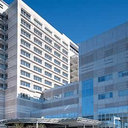Serine protease inhibitor Kazal type 1 and epidermal growth factor receptor are expressed in pancreatic tubular adenocarcinoma, intraductal papillary mucinous neoplasm, and pancreatic intraepithelial neoplasia.
الكلمات الدالة
نبذة مختصرة
BACKGROUND
Serine protease inhibitor Kazal type 1 (SPINK1) is expressed in normal human pancreatic acinar cells and in a variety of tumors, and binds to the epidermal growth factor receptor (EGFR), mediating cell proliferation through the mitogen-activated protein kinase cascade in pancreatic cancer cell lines. Here, we aimed to assess SPINK1 and EGFR expression in various neoplastic lesions, including tissues demonstrating precancerous changes.
METHODS
Surgical specimens of pancreatic ductal adenocarcinoma (n = 23), intraductal papillary mucinous neoplasm (IPMN;n = 21), pancreatic neoplasms other than ductal adenocarcinoma (n = 8), chronic pancreatitis (n = 11), and pancreatic intraepithelial neoplasia (PanIN) lesions within the resected specimens were analyzed immunohistochemically for SPINK1 and EGFR expression.
RESULTS
Sixty-five PanIN-1A, 32 PanIN-1B, 17 PanIN-2, and 6 PanIN-3 were identified. Both SPINK1 and EGFR were expressed in almost all PanIN lesions. All tubular ductal adenocarcinoma, IPMN, and mucinous cystadenocarcinoma samples (neoplasms of ductal origin) expressed SPINK1, whereas acinar cell carcinoma, anaplastic carcinoma, adenosquamous carcinoma, insulinoma, and islet cell carcinoma did not. EGFR was expressed in 87 % of tubular adenocarcinoma and 48 % of IPMN lesions. Among IPMN lesions, malignant lesions (IPMC) expressed EGFR more often than benign lesions (IPMA) did. Scattered expression of EGFR was observed in normal pancreatic ducts and within the tubular complex within chronic pancreatitis lesions.
CONCLUSIONS
These results indicate that SPINK1 plays a role as a growth factor, signaling through the EGFR pathway in pancreatic ductal adenocarcinoma and neoplasms, and that the EGFR is involved in the malignant transformation of IPMN.




